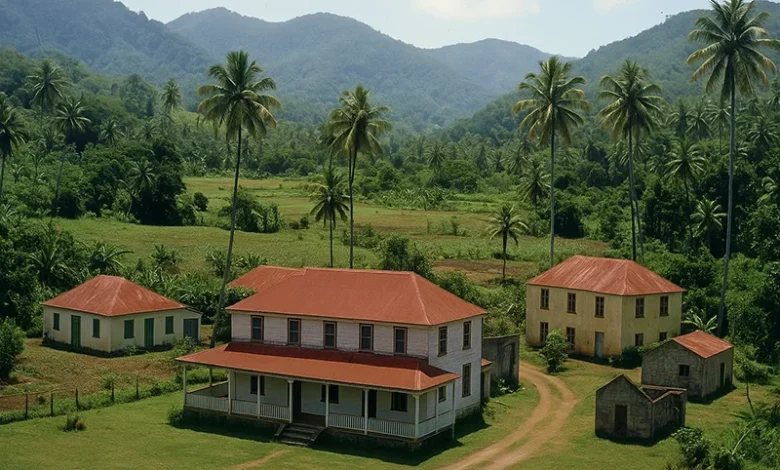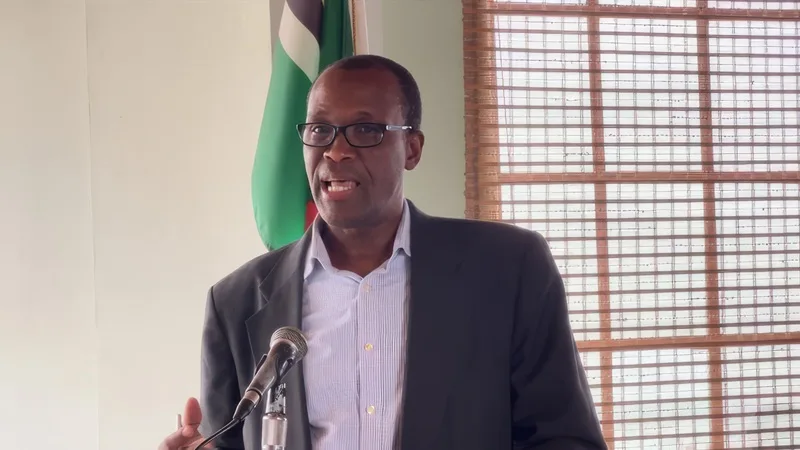Castle Bruce Estate

Castle Bruce Estate, situated in the fertile valley of Saint David Parish, Dominica, dates back to the mid-18th century. It was established by Captain James Bruce, a colonial Royal Engineer, who named the expansive land his “Castle.” At its peak, the estate covered around 1,485 acres and was among the most extensive sugar plantations on the island, cultivating sugar cane, rum, and molasses for export. Castle Bruce’s name replaced the indigenous Kouanari, once the name of the local Kalinago settlement.
By the early 19th century, records indicate that the plantation held between 210 and 280 enslaved people, a number that declined gradually due to mortality, abolition, and changes in estate structure. Over time, the estate transitioned into banana and coconut production.
CDC Era and the Castle Bruce Affair
In 1950, the British Commonwealth Development Corporation (CDC) acquired the estate to develop sustainable agriculture in rural Dominica. CDC’s operations employed nearly all residents in Castle Bruce and nearby hamlets, centring around banana and coconut cultivation as economic lifelines for the village.
A turning point came on 10 July 1972, when Atherton “Athie” Martin, a Cornell-trained agronomist newly appointed CDC estate manager, was instructed to lay off 53 workers due to financial pressures. He refused, arguing that such dismissals would devastate the local community. Instead, he proposed the formation of a worker-run cooperative, directly challenging CDC policies.
The confrontation, later known as the Castle Bruce Affair, sparked a national debate and activism. On 3 November 1973, local farmers attempted to participate in Independence Day celebrations with red-and-black banners, which provoked police suppression. Their pressure ultimately contributed to CDC’s decision to sell the estate to the cooperative by 1978. The Castle Bruce Farmers’ Cooperative became a landmark of agrarian reform and collective ownership in Dominica and the Caribbean.
Cooperative Transformation and Community Development
Today, Castle Bruce remains the largest settlement in Saint David Parish, with roughly 1,300–1,500 residents, and its economy is based on agriculture, eco‑tourism, and natural resources.
After acquiring the plantation land, the Cooperative evolved into a structured organisation with elected leadership, transparent governance, and community-focused operations. Members collectively manage decisions about land use, crop planting, finances, and reinvestment. These efforts transformed Castle Bruce from a plantation-dependent to a community-owned model of agricultural and rural empowerment.
Political Legacy and Broader Influence
The Castle Bruce Cooperative and the transition from 1972 to 1978 had significant political repercussions. The experience galvanised rural farmer mobilisation through the Dominica Farmers Union (DFU). Progressive leaders like Athie Martin led efforts for land reform, cooperative organisation, and political alignment with the Popular Independence Committee and later the Dominica Freedom Party (DFP). Conservative figures like Ted Honychurch and Alvin Armantrading contrasted this leadership with their elite-aligned agendas.
The DFU’s role in mobilising rural support contributed to the 1979 uprising and the 1980 general election victory of the DFP. Although Castle Bruce was never a legislative seat, its local activism had a significant influence on national outcomes, particularly in rural constituencies.
Today, Castle Bruce is still cited in academic and policy studies as a case in Caribbean cooperative development. Its model contrasts sharply with colonial estates and serves as a reference point for participatory, locally controlled agriculture and social change.




